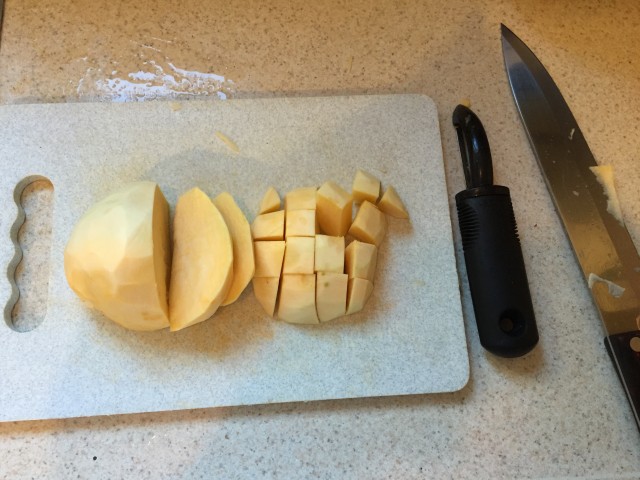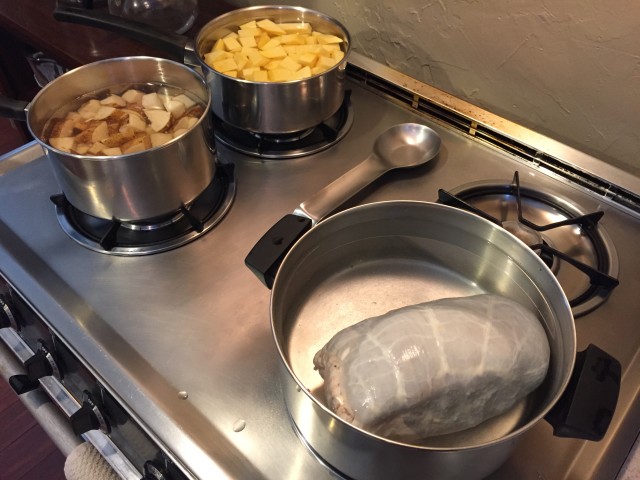April 17th has arrived! I’ve completed the final two pages that include everything up to and through the dinner.
Here are the potatoes and rutabagas ready to be made into the standard side dishes.
Those rutabagas are covered with a layer of wax. I imagine this is to keep them fresh longer since the roots and tops expose the bulb when chopped off. We typically make mashed potatoes without pealing the skins since we like the heartier flavor and extra nutrition from the skins. This won’t happen though with rutabaga as all that wax needs to go. Samantha made the accurate remark that it looked like a mango when I was cutting it, even though the smell is similar to a cabbage.
Here are the 3 dishes ready to go. It took a good 2 days for the haggis to thaw in the fridge after being tucked away in the freezer, but I was glad to see that it seemed essentially the same as it did 2 weeks earlier.
As planned, here’s the back-up meal prepped below, just in case none of us liked the haggis dinner. Debbie was wondering why I didn’t just stick to an extra meat dish instead of making an entire chicken roast with more sides. She asked this on the day of the dinner and I didn’t really have a good answer. I think I was stuck on the idea that I would be feeding 6 and needed an entire meal for everyone in case we didn’t like the haggis, even though it was primarily for her and my step-mother, Sharyn, and the sides for the haggis would easily work with the chicken roast. Oh well, it was too late by then to change course… lots of left-overs! Those white root veggeis are parsnips, by the way. We really like them with a roasted bird.
Here’s the haggis, swelling up as it cooks from the oats expanding and everything cooking inside.
I was a little bummed to watch a small stream of tan-colored liquid seeping out of the little holes in the stitching. I knew this was the suet melting along with the juices of everything else. In my mind I was thinking, “Oh no, there goes the flavor!” But there was nothing I could do. I stiched that bag shut as well as I could and it simmered like this at 175 F for 2.5 hours. Thankfully there wasn’t that much of the fat floating on top of the water by the end.






